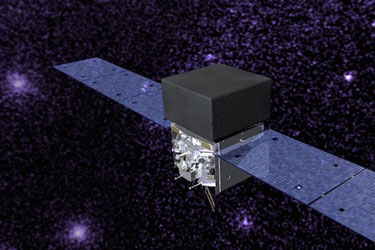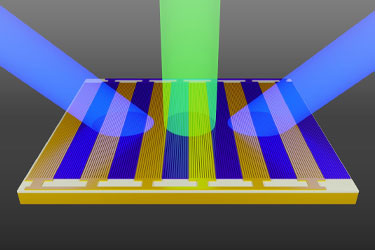Innovative Breakthrough: Highest Resolution Gamma-Ray Sensor in Flight Launched
The birth of a new gamma-ray sensor
According to a June 28 report on the Physicist.org website, the Lawrence Livermore National Laboratory (LLNL) in the U.S. has received exciting news that scientists at LLNL have succeeded in developing the highest-resolution gamma-ray sensor in space flight, the High Purity Germanium (HPGe) Gamma-Ray Sensor. This major innovation will undoubtedly give scientists a great boost in their research and detection of asteroids and other celestial bodies.

Sensor with the Large Gamma-Ray Spectrometer and the "Prosecco" detector
The advanced sensor is a key component of the Large Gamma-Ray Spectrometer (GRS), developed by LLNL in collaboration with scientists at Johns Hopkins University. On October 13 last year, the GRS embarked on a journey into space aboard the Prospector probe, which was carried on a NASA Falcon Heavy rocket. As the "messenger" for mankind's first visit to the largest metallic asteroid in the solar system, "Prosaic", the Prosaic probe has an extremely important scientific mission.
Superior sensor performance
In post-launch testing, the HPGe gamma-ray sensor demonstrated impressive performance, with a resolution of 2.1 kilo-electronvolts. This far surpassed the 5-kiloelectronvolt resolution of the gamma-ray sensor the lab developed in 2004 for the Mercury mission's Messenger probe.
The researchers noted that high resolution is not easy to achieve in a laboratory environment, but what is truly amazing is that it was maintained during the launch process and under the harsh conditions of spaceflight.
Importance for asteroid detection
A higher-resolution gamma-ray sensor could help the Prosaic probe more accurately identify chemical elements on the surface of the asteroid of the same name.
Currently, the Prosaic probe is about 400 million kilometers from Earth. Over the next six long years, it will travel another 3.2 billion kilometers in space. The "Prosaic" asteroid is composed mainly of metals and is thought to be a remnant of a collision of materials early in the development of the solar system. Deeper exploration of "Prosecco" will give scientists "real access to the planet's core", providing an unprecedented opportunity to unravel the mysteries of the planet's inner world.
MORE FROM WIRED

- Apple's fall event: iPhone 16 series makes a stunning debut

- Space-Time Metasurfaces: Unlocking a New Future for Wireless Communications and Optical Applications

- Novel RNA Construction Module Enables Efficient Production of High-Density RNA Microarrays
- Aug,30,2024

- Innovative Applications of Drone Technology in Agriculture
- Aug,21,2024

- OpenAI Launches SearchGPT, an Innovative AI Search Engine
- Aug,19,2024

- Google Pixel 8A: AI technology-enhanced, the king of price-performance ratio
- Aug,07,2024

- Application of 5G in Intelligent Transportation System
- Aug,01,2024